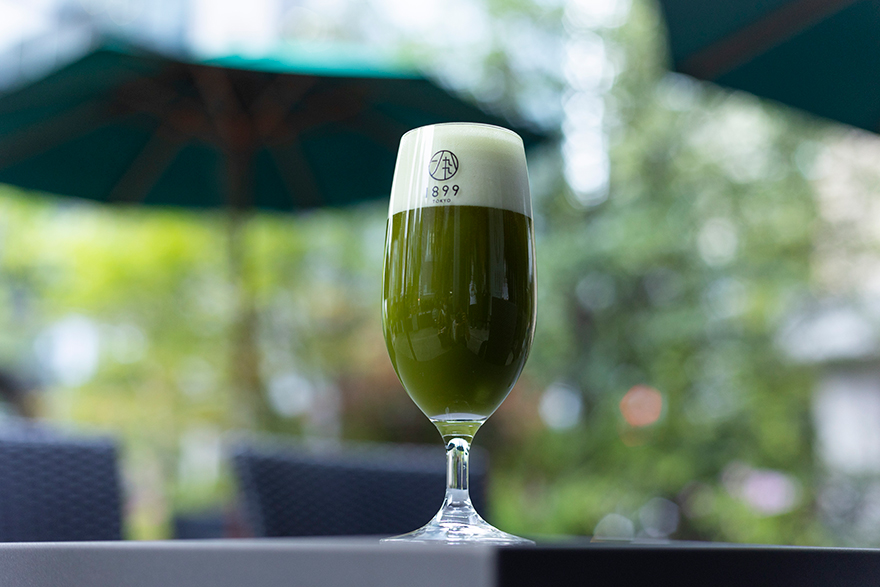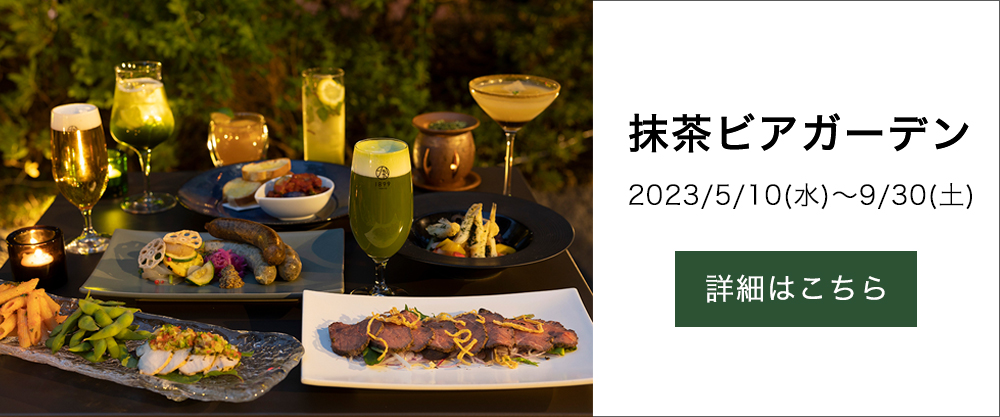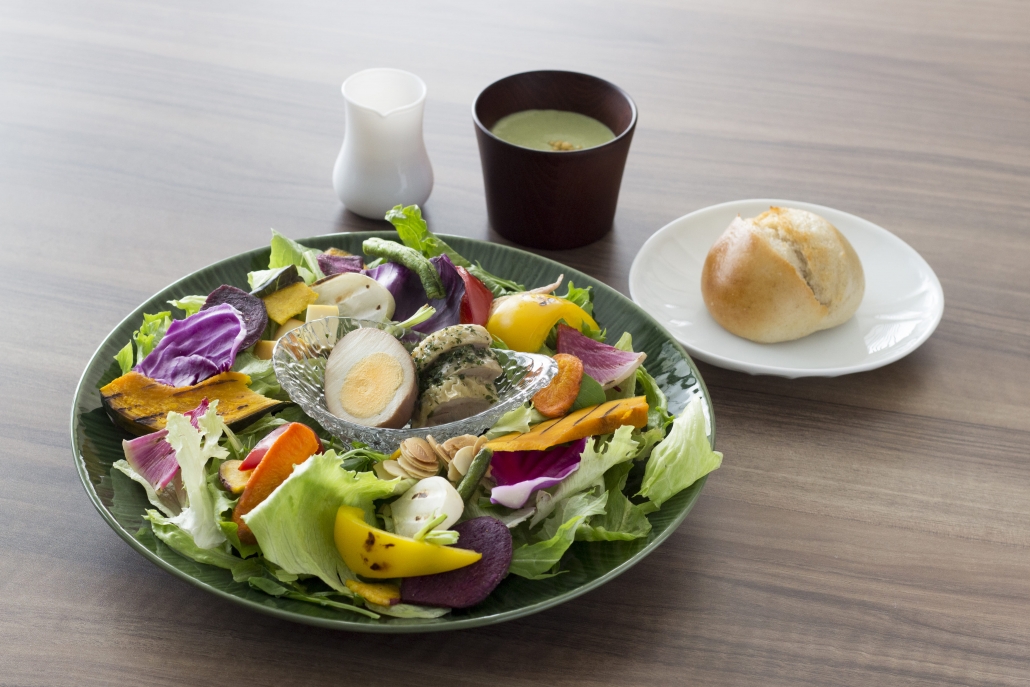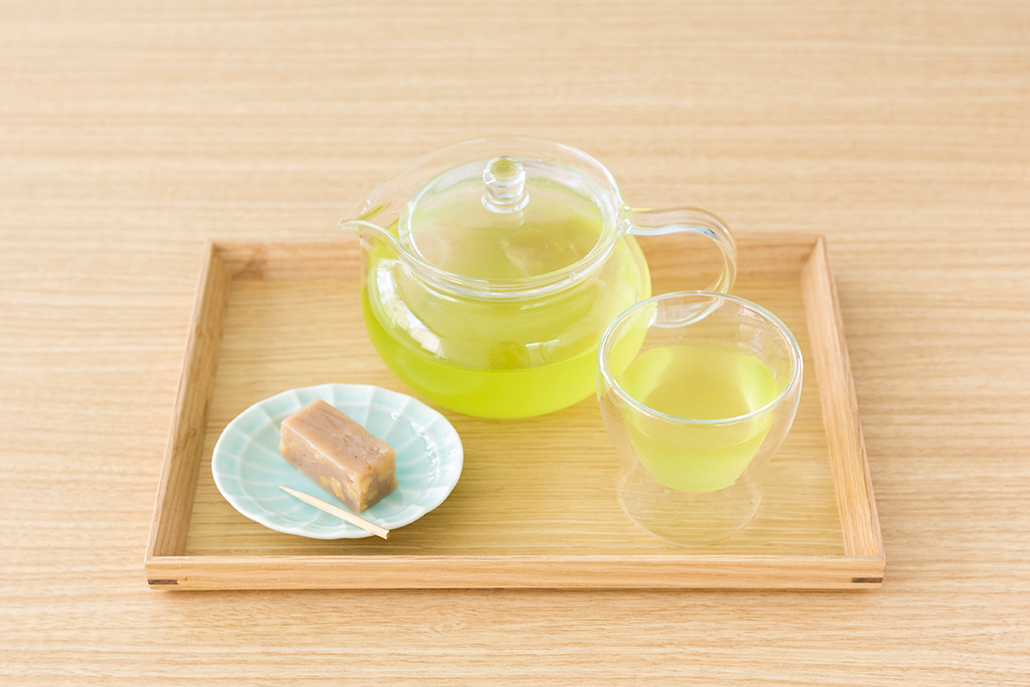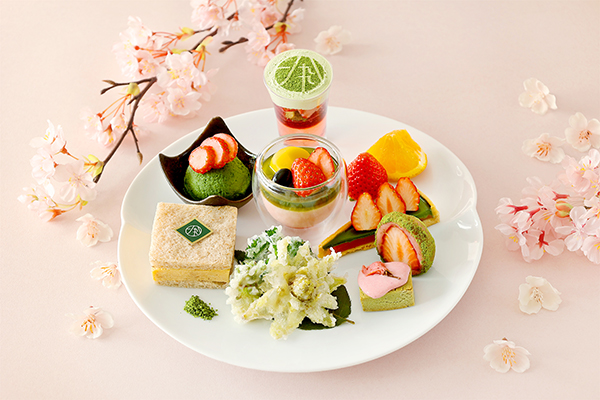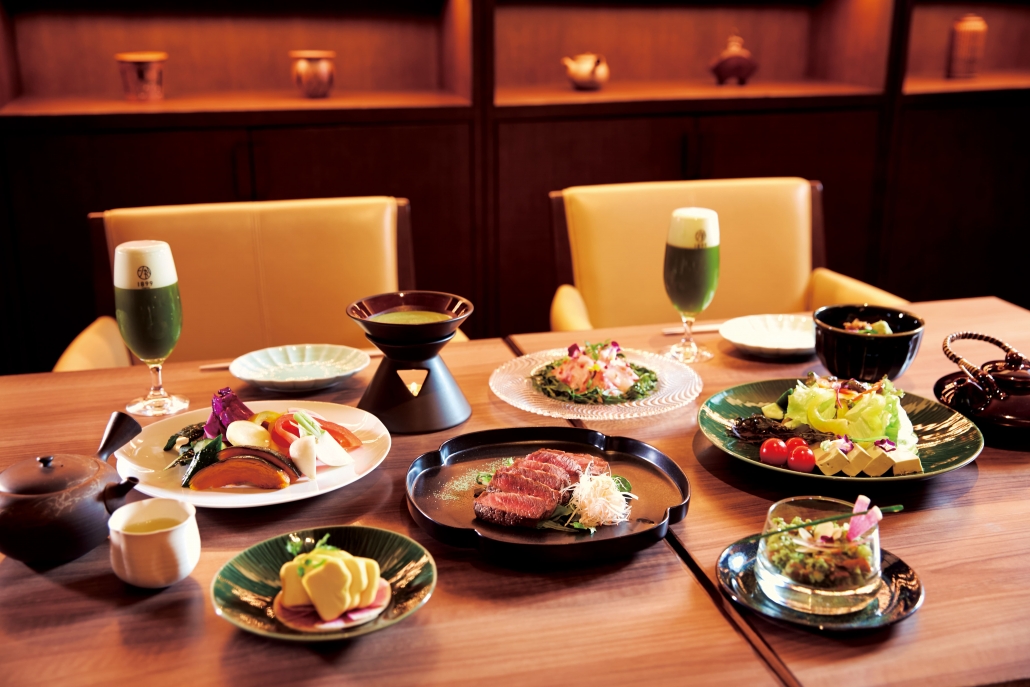The “1899 Matcha Beer” is the most popular alcoholic dinner-time beverage at Restaurant 1899 Ochanomizu. Here, we would like to introduce the behind-the-scenes story of 1899 Matcha Beer.
How 1899 Matcha Beer Came to Be
Before the restaurant’s opening, the staff aimed to create a flagship signature drink that aligned with the store’s concept of tea-based beverages. Despite decreasing alcohol consumption in recent years, beer orders for toasting are still quite common. One staff member proposed the idea of creating a beer cocktail using tea. While beer may not have an extremely high alcohol content, consumers have voiced concerns about purines (chemical compounds in foods known to cause gout) and calories. The image of beer as a healthy beverage is almost nonexistent, as evidenced by expressions like “beer belly.” With this in mind, the staff thought it would be wonderful to incorporate some of the health benefits of tea into beer, and thus we immediately began the development of several renditions of tea beer.
At this stage, various ideas such as using shochu, sake, plum wine, green tea liqueur and more were proposed, and so we simultaneously proceeded with the development of these alternatives.
A Series of Failures: Challenges in a Small Development Room
The developmental process took place in a small meeting room, around six tatami mats in size, with a team of three staff members. Since there were daytime meetings and consuming alcohol during work hours was not feasible, the developmental sessions always began after 6 p.m. However, instead of enjoying delicious drinks, the developments were marked by a series of failures, leading to a decline in motivation. Drinking subpar alcoholic beverages continuously became extremely demotivating. One of the staff who stopped by commented, “It smells like my house from my college days when I spent all night drinking.”
We conducted various experiments during the developmental process. Initially, attempts were made to combine beer with green tea and hojicha (roasted green tea), and this was remarkably unsuccessful, as it tasted exactly as bad as we expected. We also tried to combine matcha powder with the beer, which was another failure. The matcha failed to dissolve, resulting in sedimentation. Some particles even floated, and both, quite frankly, were unsightly. While stirring would somewhat dissolve the matcha, beer is a carbonated beverage, and mixing interfered with the delicious carbonation. And so, this approach was just another unsuccessful attempt on our list of failures.
Amid all these failures, one staff member suggested using a green tea liqueur. After purchasing the green tea liqueur, we later conducted a trial with high expectations. The appearance was not a beautiful deep green but rather a dark color that is hard to describe, and the taste resembled mud — making it incompatible with beer. As it was originally a liqueur used in cocktails, our expectations were high, and we were disappointed. Subsequently, we attempted to warm the matcha and perform a ceremonial preparation similar to tea ceremonies, and explored various other methods to combine it with beer. However, aside from the initial difficulty, there were practical issues, such as not having time to prepare tea individually when serving a beer toast and the beer becoming lukewarm. These factors made the approach unrealistic.
The Birth of Matcha Beer: The Struggles and Successes of the Staff
Amid these trials and errors, a combination of matcha and water, mixed with pre-dissolved tea, somehow came together in time for the grand opening. The most challenging aspect was dealing with the residue of matcha powder. Nowadays, the staff prepares the tea that will serve as the base for the day’s 1899 Matcha Beer, overcoming this challenge and ensuring everything is ready to welcome guests each day.
A Rich Green Laden with Emotion: Visuals and Taste of 1899 Matcha Beer
The most common feedback from those who have tasted 1899 Matcha Beer is that the slight bitterness of beer and the bitterness of matcha complement each other. The negative scent of beer is enveloped by the aroma of matcha, providing a distinct experience of the matcha flavor. Many customers, impressed with the taste, go on to order a second or even a third glass. Tea contains beneficial elements such as catechins, theanine and vitamin C. Additionally, by consuming matcha directly, people directly consume the tea leaves, allowing them to intake insoluble components like dietary fiber that are not typically absorbed in regularly brewed tea. We recommend our customers to enjoy our matcha beer, letting them know, “It’s not just a good beer, it’s also good for your body.”


